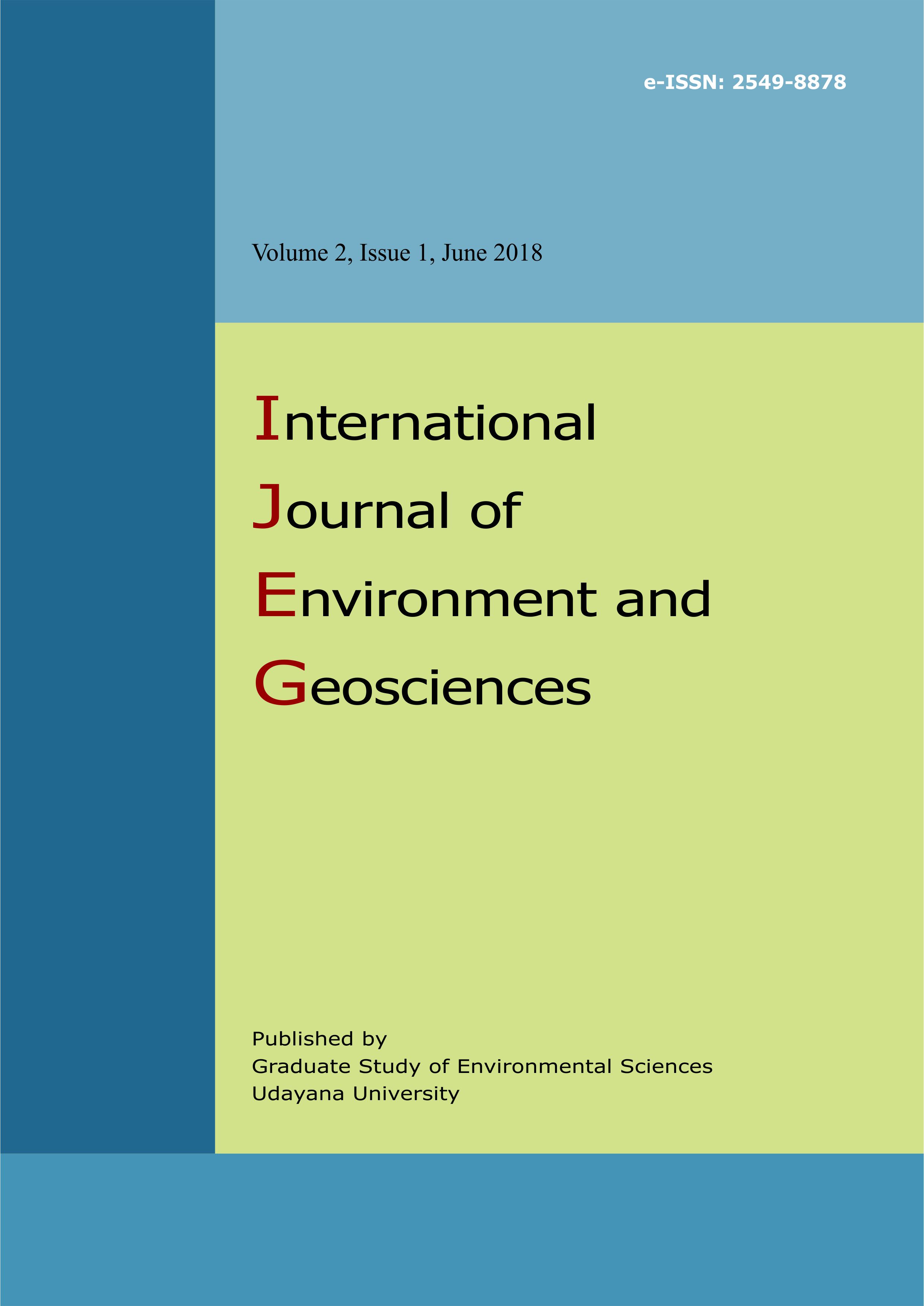Estimation of Green Land to Urban Change Based on Cellular Automata (CA) Method in Singaraja City and its Surrounding Areas
Abstract
Singaraja city is the second largest city in Bali which have a fairly rapid growth. Growth and development of the region in urban areas of Singaraja give the positive impact on the economy of the community but also give the negative impact on the environment. Land use change and land conversion into one of the negative issues of the development of urban areas in Singaraja. This study intends to calculate the amount of land conversion occur on the green land into urban areas within 14 years (2001-2015) and predict land use change in 2020 and 2025 in Singaraja City and Its Sorrounding Areas. Landsat 7 and Landsat 8 imageries were used to determine the land use map. Land use map obtained through the process of image classification using supervised method then verified using data field. Land use maps in 2015 and 2001 used to obtain the amount of change of urban areas and green land during the period of 14 years. This results show increasing amount of urban areas as 11,37% (3.153,74 ha) whereas green land decreased by 11,17% (3.097,68 ha). Land use change was predicted by Markov method. The projection results show the amount of urban areas in 2020 was 27,40% (7.598,45 ha) and 35,97% (9.974,55 ha) in 2025. The results obtained with this prediction accuracy rate of 0.91.
Downloads
Authors who publish with this journal agree to the following terms:
- All articles published by International Journal of Environment and Geosciences (IJEG) and Graduate Study of Environmental Sciences, Udayana University are made available under an open access license worldwide immediately. This means everyone has free and unlimited access to the full-text of all articles published in International Journal of Environment and Geosciences (IJEG), and everyone is free to re-use the published material given proper accreditation/citation of the original publication. Open access publication is supported by authors' institutes or research funding agency by payment of a comparatively article processing charge for accepted articles (See Author Fees). International Journal of Environment and Geosciences (IJEG) and Graduate Study of Environmental Sciences, Udayana University publish articles under the Creative Commons Attribution License.
- Authors are able to enter into separate, additional contractual arrangements for the non-exclusive distribution of the journal's published version of the work (e.g., post it to an institutional repository or publish it in a book), with an acknowledgement of its initial publication in this journal.
- Authors are permitted and encouraged to post their work online (e.g., in institutional repositories or on their website) prior to and during the submission process, as it can lead to productive exchanges, as well as earlier and greater citation of published work (See The Effect of Open Access).





